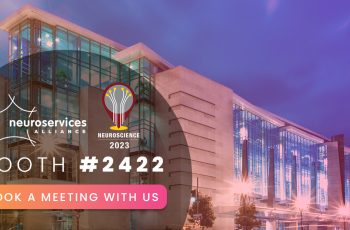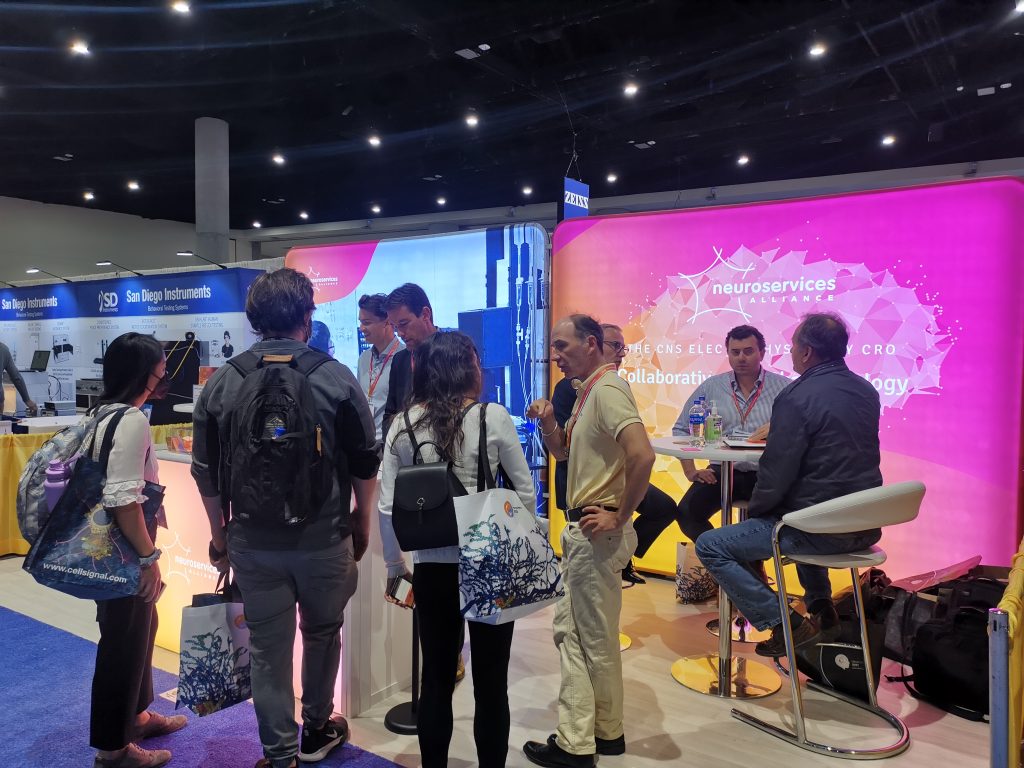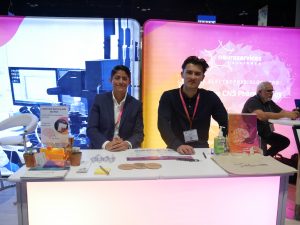
Meet Neuroservices-Alliance at SfN 2023!
The much anticipated Neuroscience 2023 conference is just around the corner. Our team is gearing up to meet with the neuroscience community and bring the latest in groundbreaking neuroscientific research.

PSTR056.02 / VV35 – High density MEA recording of primary rat neuron cultures and human iPSC-derived neuron cultures growing at low density on astrocyte feeder layers
One of the most critical aspects of neuroscientific research is studying neuronal activity at the cellular level. Traditional patch clamp recording allows the examination of individual neurons but is limited to only a few at a time. Neuroservices-Alliance is here to introduce a game-changer in the field. They will showcase data recorded from low-density rat cortical neuron cultures plated on astrocytes, closely resembling the conditions used for patch clamp recording. With high-density microelectrode arrays (MEAs), they promise to dramatically increase the data throughput, enabling the simultaneous monitoring of hundreds to thousands of neurons. This development has the potential to revolutionize our understanding of neuronal activity.
>> Read full abstract on SfN 2023 Neuroscience Meeting Planner
PSTR270.12 / Y12 – Patch clamp profiling the functional properties of human iPSC-derived nociceptors
Chronic pain affects millions worldwide, making its study crucial in neuroscience. Human iPSC-derived nociceptors serve as an in vitro model for studying pain, but understanding their functional properties is essential. Neuroservices-Alliance will present research that profiles these nociceptors’ functional properties at different developmental stages. By conducting whole-cell patch clamp recordings, they’ll delve into factors like membrane properties, resting membrane potential, and spontaneous activity, providing insights into nociceptor development. This research could pave the way for more effective pain management solutions.
>> Read full abstract on SfN 2023 Neuroscience Meeting Planner
PSTR519.14 / C16 – Characterizing the maturation of electrophysiological properties in stem cell-derived human neurons lacking methyl CpG binding protein 2 (MECP2)
Rett syndrome is a rare, genetic neurodevelopmental disorder without a cure. Neuroservices-Alliance is at the forefront of research to develop novel therapies for this condition. Using MECP2 KO human embryonic stem cell-derived neural stem cells, they aim to understand the impact of MECP2 loss-of-function on electrophysiological phenotypes. Through whole-cell patch-clamp recordings, they track the development of these neurons, focusing on properties like cell capacitance, membrane potential, sodium current density, and GABAA receptor current amplitudes. This work may offer a promising avenue for future treatments of Rett syndrome.
>> Read full abstract on SfN 2023 Neuroscience Meeting Planner
PSTR080.01 / T1 – Establishment of a preclinical migraine model based on nitroglycerine (NTG)-induced sensitization of spinal trigeminal parabrachial (TPB) neurons in the anesthetized rat
Migraines can be debilitating, affecting countless individuals. The role of the spinoparabrachial pathway in pain-related migraines has not been fully explored. Neuroservices-Alliance is taking a significant step by establishing a preclinical migraine model. Using electrophysiological measures, they monitor the activity of spinal trigeminal parabrachial (TPB) neurons and assess the impact of nitroglycerine (NTG) on migraine onset. By recording responses to mechanical and thermal stimulations, they aim to understand the sensitization of TPB neurons and its role in generating migraine sensations. This research could open doors to new ways of managing migraines.
>> Read full abstract on SfN 2023 Neuroscience Meeting Planner
Neuroservices-Alliance is excited to share these groundbreaking findings at #Neuroscience2023.

Don’t miss the chance to connect with our team at booth #2422.
Whether you’re an experienced researcher or just beginning your journey in the field, this conference promises to be a hub of innovation, knowledge sharing, and potential collaborations. Join us at Neuroscience 2023 and be part of the future of neuroscience research!